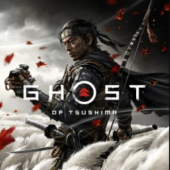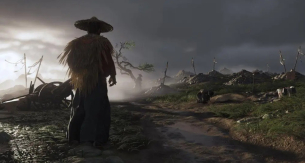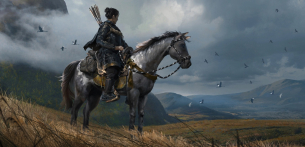Immerse yourself in "Ghost of Tsushima," Sucker Punch's latest foray into a land marked by war and beauty. Here, players don the armor of Jin Sakai, a samurai thrust into an untenable situation as the Mongol hordes lay siege to Tsushima. With a world rendered in exquisite detail and a protagonist caught between the rigid samurai code and the pressing need for guerrilla warfare, "Ghost of Tsushima" delivers a narrative-rich adventure set against one of history's most captivating eras.
Set against the backdrop of the Mongol invasion in 1274, the game seamlessly combines a gripping narrative with awe-inspiring environments and riveting combat mechanics. Though playing the role of Jin Sakai, players are taken on a voyage of conflict and honor, delving deep into the dichotomy between the samurai code and the ruthless exigencies of war.
Landscape of Tsushima: A Captivating Canvas
"Ghost of Tsushima" promises more than a narrative; it offers a journey through a meticulously crafted environment that's as enchanting as it is historic. Every scene is a tableau of natural beauty, complete with swaying grasslands, tranquil forests, and mountains that scratch the very heavens. The game isn't just content with static beauty; weather systems and day-night cycles breathe life into the terrain, making Tsushima a character in its own right, dynamic, and ever-evolving.
Percolating through the game is the personal struggle of the protagonist Jin Sakai, whose transformation from a traditional samurai into a strategy-shifting warrior is at the heart of the narrative. While Jin may not be overwhelmingly charismatic, the antagonist, Khotun Khan, stands out with his menacing charm and strategic brilliance. The tension between this formidable foe and Jin's resolve sets the stage for an enthralling 40 to 50-hour adventure.
Tales of the Fallen: Rich Storytelling Amidst War
'Ghost of Tsushima' shines bright in its artistic design. The game pays homage to Akira Kurosawa's classic film style with its optional Kurosawa Mode, transforming the game into a monochromatic cinematic experience. Be warned, though; this mode may not be ideal for the entire venture due to certain color-coded quests. The accompanying score, marrying the quietude of traditional flutes with the roaring drums of battle, ensures an immersive experience regardless of the action on-screen.
The heart of Tsushima beats with the stories of its inhabitants and the protagonist's internal conflict. While Jin may start as a traditionalist bound to his samurai teachings, the necessity to adapt to new forms of combat to save his homeland forms a compelling arc of growth and self-reflection. The presence of Khotun Khan, sophisticated and fearsome, adds a riveting dimension to the tale as he presents a cerebral challenge to Jin's might.
Art of the Katana: Combat That Cuts Deep
Combat is the soul of "Ghost of Tsushima," a gloriously intricate dance of steel that captivates with every clash. Building on a foundation of basic strikes and counters, the game elevates the experience with its introduction of stances—four distinct fighting styles that Jin must master. Each stance provides a strategic advantage against specific enemy types, inviting players to analyze and adapt mid-battle. This proficiency-driven progression keeps the combat fresh, and players constantly engaged in their mastery of the blade.
The game's combat system is intuitive yet rich, drawing inspiration from other franchises yet forging its own unique path. Players will appreciate the strategic depth offered by varying fighting stances, each tailored to combat different enemy types. Mastery involves not only physical prowess but also strategic flexibility, switching stances to match evolving threats, and honing your techniques rather than relying on stats.
Symphony of the Shogunate: Music That Moves with You
The game's auditory splendor is nothing short of a symphonic masterpiece, an ever-present character that wraps players in the fabric of feudal Japan. From the gentle whisper of the flute to the bellowing rage of the drums, the soundtrack adapts to your playstyle, setting the rhythm for stealthy escapades and thunderous confrontations alike. This responsive musical score infuses every action, every stealthy maneuver, and every panoramic vista with soul-stirring notes.
Behind the Shadows: Stealth's Weaker Stance
Not every aspect of Jin's repertoire is without fault; "Ghost of Tsushima" stumbles slightly in the realm of stealth. While it offers basic stealth mechanics that fit the theme of a dishonored samurai embracing the shadows, the enemy AI's questionable tactics during detection can dispel immersion. Despite this, the stealth serves as a counterpoint to the polished combat, offering alternate approaches to conflicts that, while not as well as executed as the duels of honor, are serviceable.
Conclusion: A Journey Worth Every Slash
"Ghost of Tsushima" is a triumph that honors the samurai genre with its blend of stunning environments and deeply satisfying combat. Even as it slightly falters in its quieter pursuits, the game remains an admirable homage to a storied time, offering players a profound experience that cuts beyond the surface and into the very heart of what it means to fight for one's beliefs.









